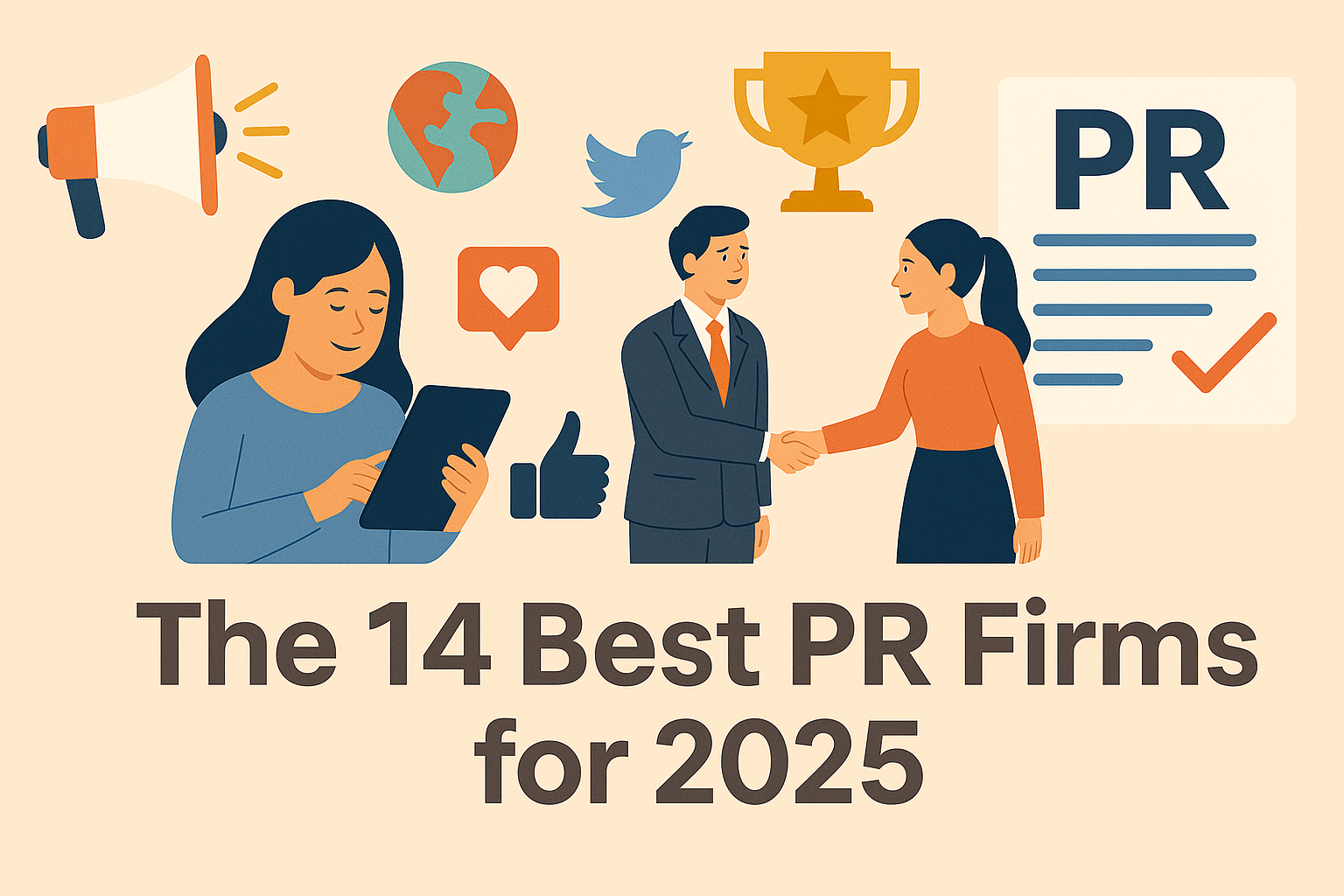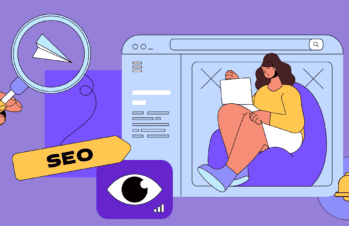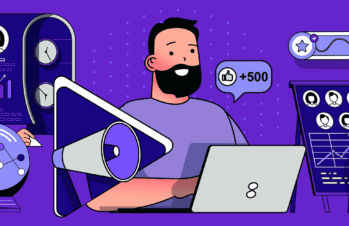Diversity, inclusion, equity.
These are not buzzwords. They are the foundation of a healthy workplace. Promoting these qualities is key to creating an environment in which people of different backgrounds can work together to achieve common goals.
But deploying diversity, inclusion, and equity standards can be challenging.
Before a business can update its culture, leadership needs to have a clear understanding of the differences between these terms, why they matter, and how to best implement them.
In this guide we’ll define each practice, address why it matters, and discuss how to build an equitable team and target people ethically.
Defining Workplace Intentions
One can’t speak the language of a progressive workplace until one has a complete understanding of what diversity, inclusion, and equity mean. So let’s define each. Using the Racial Equity Tools Glossary as a guide, here are the definitions of each of these practices:
Diversity: “Diversity includes all the ways in which people differ, and it encompasses all the different characteristics that make one individual or group different from another,” according to the Racial Equity Guide.
That means people from a range of different social and ethnic backgrounds and of different genders, sexual orientations are included for their own sake. And by no means is diversity limited to race or gender. Diversity, according to Diversity.Social, an organizational development organization that focuses on promoting equity, diversity, and inclusion around the world, diversity encompasses four Diversity Types in the Workplace:
- Internal Diversity
- External Diversity
- Organizational Workplace Diversity
- World Views
And these include everything from age and physical ability, to education, appearance, seniority, and political views.
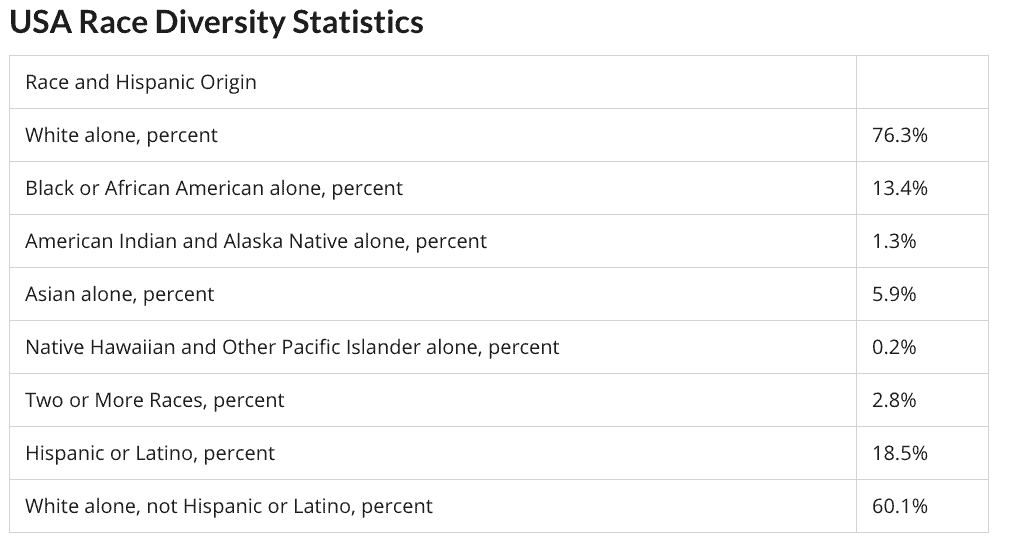
Inclusion: According to Global Diversity Practice, “Inclusion is an organizational effort and practices in which different groups or individuals having different backgrounds are culturally and socially accepted and welcomed, and equally treated.”
In essence, it’s taking all of the characteristics of a workplace staff from above and ensuring that each is celebrated and not discriminated against. It means creating a culture of belonging and ensuring that each individual feels valued.
Equity: Equity is a state of fairness and impartiality. In the workplace that translates to a space that’s equally for everyone. Forbes describes it this way: When all employees are empowered and feel empowered to bring their unique thoughts and ideas to the table, they know they’re being valued equally — that’s equality… equity is what happens when all members of a diverse population of employees have equal opportunities and support to succeed and grow.”
Why Diversity, Inclusion, & Equity Matter
More than just PR fodder, diversity, inclusion, equity matter in terms of a business’s ethics, economics, service quality, and output. To make a case for diversity, inclusion, and equity, we’ll draw on some real world arguments to provide examples.
Inclusion and diversity benefit your bottom line
According to research by Catalyst, a global nonprofit that works to build workplaces for women, inclusive organizations maximize talent and productivity, drive innovation, and often showcase greater financial health.
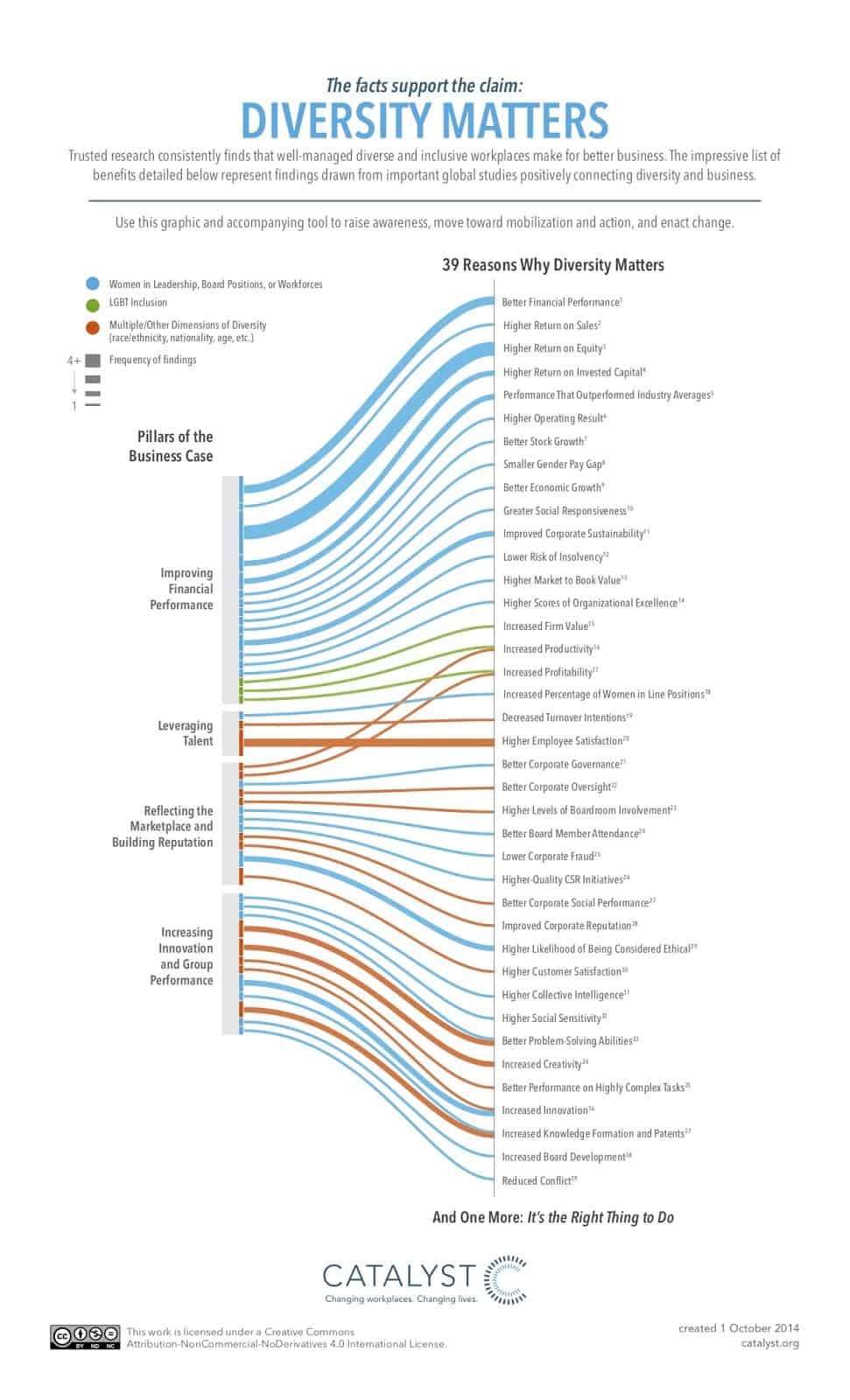
Diverse Boards Outperform Others
A study by CreditSuisse Research Institute found that “Large-cap companies with at least one woman on the board have outperformed their peer group with no women on the-board by 26% over the last six years.”
Diverse Groups Are More Innovative
Having a diverse team drive innovation, as has been proven in multiple studies including one in Scientific American. The study found that that socially diverse groups (that is, those with a diversity of race, ethnicity, gender and sexual orientation) are more innovative than homogeneous groups. This makes sense, of course, when you consider that innovation requires the ability to think differently about a problem, product, or opportunity. Teams that include people with a wide variety of experiences, backgrounds, and ways of thinking will naturally be better able to brainstorm unique or different ways of thinking.
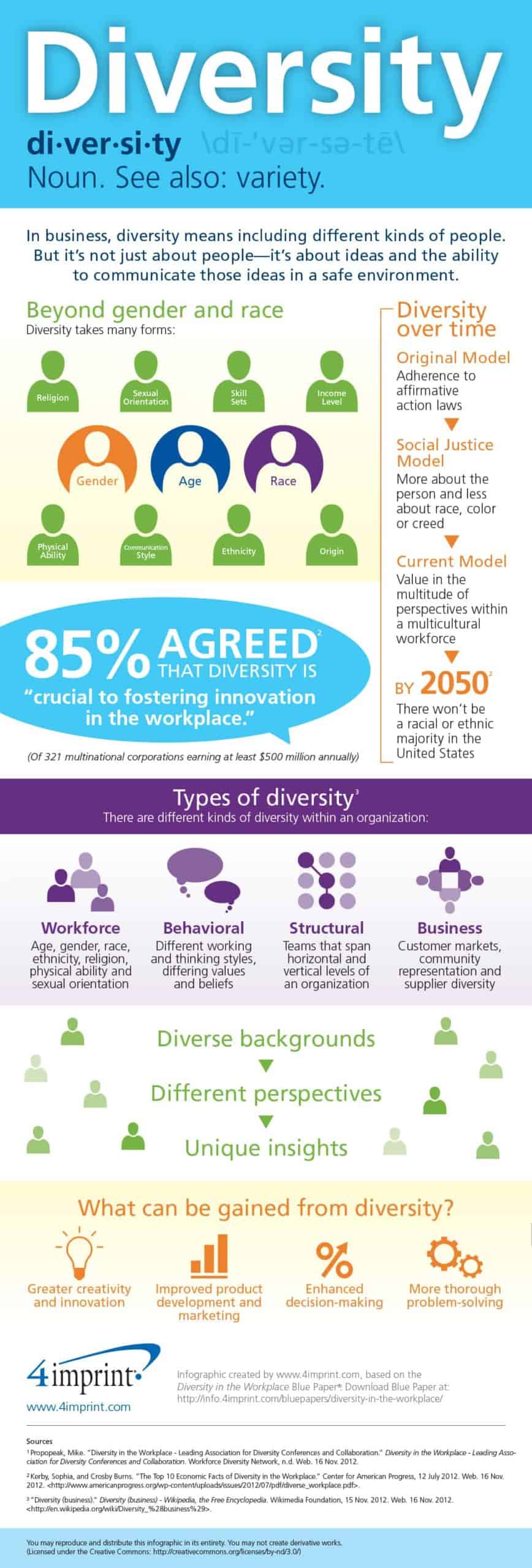
Building a Diverse Staff
So how do you start from the inside out and build the kind of culture that not only reflects diversity, but practices inclusion–which, in turn, leads to equity?
To build a staff that reflects a rainbow of backgrounds, managers must change their recruitment philosophy to reflect a mindset driven by a desire to hire a broad range of individuals. An article in Entrepreneur suggests that leadership teams create a “customized-diversity-vision” for the business. Within this vision, leaders can outline their goals for the organization’s hiring, their policy for harassment or discrimination (which should be zero-tolerance), and how they’ll determine and make accommodations for those with physical impairments or other special needs.
From there, Human Resources departments need to adjust recruitment techniques. While this is a major undertaking with many moving parts, from organizational protocols to personal commitments by HR staff, here are a few of the most important points to address.
- Avoid Bias in Sourcing
According to SHRM, when recruiting on sources like LinkedIn, data from 80,000 recruiters worldwide showed that hiring managers were more likely to look at male candidates. To ensure inclusivity, recruiters should employ filters that give women and minorities equal opportunities to compete for coveted roles.
- Train Staff to Identify Unconscious Bias
Unconscious biases are social stereotypes about certain groups of people that individuals form outside their own conscious awareness, according to the University of California’s Office of Diversity and Outreach. And when looking at a resume, that can come into play on everything from a candidate’s name to their address. To avoid these biases playing a role in hiring decisions, managers can use HR software that blacks out a candidate’s identifying information, like name, and submit resumes that are solely a list of qualifications for HR to review.
- Adjust the Interview Process
At the New York Times, the paper has enacted protocols that when doing panel interviews, a woman must always be included. Another option is to streamline interview questions to ensure that all candidates receive the exact same queries and no one is singled out based on their gender, age, race, etc.
- Improve Onboarding
The hiring process isn’t done when a candidate signs a contract. The onboarding of a new employee is critical in building a diverse and inclusive team. This is a time to not only make a new staffer feel welcome, but to set them up for success by partnering them with another teammate, familiarizing them with the workplace culture, and asking for feedback along the way.
Recognize that onboarding processes can also be biased, even if unconsciously so. Some may begin by assuming a job candidate has familiarity with certain tools, or that they grew up with access to specific opportunities or privileges. Maybe you reference “summer camp” in a training example, or a domestic brand with no international presence in another.
These sorts of mentions, though they seem innocuous, can send a subtle message about who the candidate is expected to be, and who’s welcome and appreciated at your organization.
Marketing and Ethical Representation
Identity is such a buzzword nowadays, it’s become commodified. But abuse it or mismarket it and be prepared to be called out quick. Marketing ethics are a serious matter, especially when it comes to identity and representation.
So how do you target people ethically? You embrace inclusive marketing. That’s the term used to define campaigns that include people from variety of different genders, backgrounds, ethnicities, etc, as well as tell stories that a variety of people can relate to.
But it’s not just a box marketers should check. Inclusive marketing requires thoughtful planning–ideally, a plan created by a diverse team.
- Use data to glean information on who your audience is demographically, so you avoid an inadvertently tone-deaf ad. Pay attention to current events and issues that are affecting the group you’re trying to reach.
- Prioritize authenticity, not virality. A campaign that isn’t authentic won’t perform well, no matter how much SEO you cram into it. If the focus is on authenticity, you’ll have a much better chance of reaching a massive audience.
- Encourage everyone to speak up. If only one voice is being heard, you’re not pulling ideas from a diverse group of people. Make sure everyone in the room gets a chance to give feedback, and then consider it thoughtfully.
- Use inclusive language. Train staff in inclusive language, then implement it into your campaigns to promote diversity and better representation.
- Create culturally relevant content. Brands can be a voice in cultural conversations. Don’t be afraid to reach out to the appropriate influencers to be part of the conversation.
- Understand your audience. This is marketing 101, but it’s more important now than ever in ensuring that everyone within a brand’s audience is heard and understood.
- Seek the advice of a sensitivity reader. When in doubt, ask a sensitivity professional to vet your idea. Their job is to come at a concept with fresh eyes and critically analyze it to ensure it promotes equity.
Ultimately, building a great workplace that embraces inclusion and promotes equity cannot be done through just one single idea or practice. It’s a cumulative effort from the leadership team down and extends to every service or product beyond.
It takes thoughtful soul-searching and tough conversations, but with intention and transparency, any company can transform itself into a more equitable place to work.





